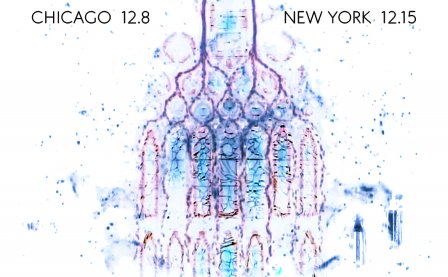How can one describe what she or he hears? As a person who performs, writes, and analyzes music, I think about this question often — it’s an issue central to the critical discourse of music. The problem calls forth a topically relevant yet admittedly clichéd quote: “Writing about music is like dancing about architecture.” I don’t fully agree with this adage; surely, one can wield written or spoken language in order to accurately detail certain specific musical events as they unfold over time, especially the deeper one delves into the theoretical dimension (i.e., x chord moves to y chord at z time). But I think the quote does contain more than a seed of truth: describing and analyzing music in a primarily non-music theoretical and non-contextual way is an exercise fundamentally rooted in metaphor, an (often futile) attempt to bridge the gap between two distinct modes of human expression.
I begin my review of S/H — a massive new compilation album of unreleased and rare material from former Emeralds member Steve Hauschildt — with such an oration, because it’s more fundamentally attuned to these issues than perhaps any other work that I’ve yet written about in a critical capacity. Admittedly, I don’t know very much about the technical aspects of synthesizer programming — someone with more knowledge on that front could speak more eloquently about the specifics of what Hauschildt does with his synths here — but a basic, purely descriptive analysis of this music seems destined to fall back on a variety of oft-used tropes and comparisons. In other words, one might describe “Liberty” — the three-part suite that forms the centerpiece of S/H’s first disc — with a stream of mildly informative metaphorical connections and images as such: the first, mostly ambient section of the suite presents a dense, gorgeous horizon of synthesizers; the second part of the suite is more dynamic, built around a swirling bed of arpeggiated notes; and the third and final section is once again rather ambient but veers into tonally darker territory with a smeared, melancholic array of synths.
But where does such a description leave us? Perhaps you now have a vague idea of what this music sounds like; maybe some word or phrase in that chain of signifiers spoke to your unique sensibilities, inspiring you to seek out Hauschildt’s creation for yourself. But we’re not very far from where we began — we have to go deeper than mere superficialities in order to begin to touch on what Hauschildt is truly doing here. The structure, then? S/H is divided into two discs, the first one comprising works from 2010-2012, the second containing earlier compositions from 2005-2009. There’s a bit of a timbral distinction between the sides, and it’s logically linked with the chronology of Hauschildt himself: the first half of S/H is comparatively cleaner and spacier (see: the past two Hauschildt solo records and that final Emeralds album), while the second half seems more rooted in the anachronistic, deeply nostalgic tones utilized by pre-2010 Emeralds.
Still, even this isn’t particularly illuminative of what’s going on with S/H. Here, we have a group of songs that explores the nooks and crannies of Hauschildt’s rich, inviting soundworld. Often, the tracks here feel like sketches, hazy snapshots of places, moods, or colors before a sudden transition to something completely different. But that’s part of the allure. There are glimpses of utter beauty, and there are flashes of absolute kitsch; there are vast, expansive episodes, and there are intense moments that seem to collapse inward on themselves. Sure, as a compilation of mostly unreleased recordings, S/H certainly contains a fair amount of relatively undeveloped material. But this draft-like quality is attractive in its own unique way. For here we are immersed in a nuanced, varied, engrossing host of sounds that Hauschildt has crafted over the past eight years. It’s not a flawless listen, but it’s a fine, rewarding sonic realm to explore, and to be honest, I’ve perhaps enjoyed listening to S/H more than any Emeralds album or prior Hauschildt solo release.
And yet even now — after attempting to describe the sound of the album, after looking at its structure, after (perhaps problematically) introducing my personal assessment of the relative value of S/H within the Hauschildt canon — I can’t help but feel that all of these words have left so much — too much — out. But that’s the unavoidable concession one must make when talking about music, isn’t it? Despite the value that music writing has in our culture, there’s simply no way to recreate the unique, subjective, highly emotional processes involved when listening to a musical work. And yet we want, we need to share these experiences with others — to communicate what we have heard, to proclaim what we have felt. So we rely on words to get as close as we can to the Platonic essence of a song or an album, to try to uncover some central truth about the music in order to justify our thoughts and our feelings about the work — to other people, yes, but primarily to ourselves.
It never truly comes out the way we want it to. So we listen again.
More about: Steve Hauschildt




